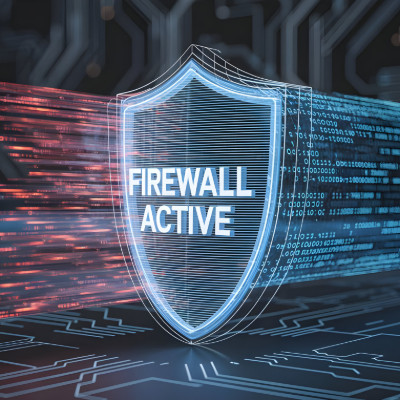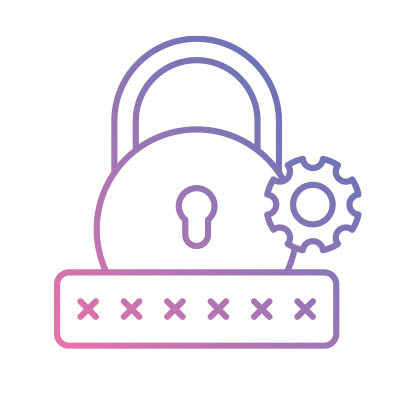How often do you find yourself thinking about how new technology will impact your business’ bottom line? Chances are, you have considered implementing a new piece of technology or two, but you might get stuck on whether or not it will actually be worth the investment. This is where you consider the return on investment that technology will provide, or ROI. Here’s how you can make sure your technology is providing results and what you can do if it doesn’t get the results you’re looking for.
Poweron Technology Blog
As we try to eke out as much fun from the final months of summer as possible, many of us will find it increasingly challenging to disconnect from the office—even from miles away. We could be lounging on a quiet beach in Bora Bora, but instead of enjoying the tranquility, we’d still be itching to check our emails. Instead of being able to truly relax, many team members and business owners still feel the pressures of the office even when away, essentially undoing any benefits of the vacation.
Let’s discuss how this can be addressed for the mutual benefit of everyone, allowing you and your team members to step away from time to time without causing disruptions.
Your business wants to use every opportunity it can to increase its bottom line and eliminate unnecessary costs, but how often does printing enter into the conversation? You waste more paper, ink, and toner than you think by not keeping a close watch on your printing practices. The right technology can not only reduce these wasteful practices but eliminate them entirely, giving you more capital to invest elsewhere in your business.
Cyberscams can be incredibly well-crafted and dangerous, and a significant portion of this danger stems from the scammer's ability to effectively utilize the psychological triggers that we all possess to some degree. Modern security training tends to focus on what signs we all need to keep an eye out for—and for good reason—but it does little to explore why modern scams are as effective as they are.
Let’s fix that by taking a moment to examine the tricks the scammers play so you can be that much more prepared to stop them by understanding how they work.
There’s a reason why we tend to focus on security, and that’s because it’s not a matter of if you experience a cyberattack, but when. It’s your responsibility to make sure that you’re ready to act in the right way when faced with these attacks. One of the best ways you can be prepared is by working with a managed service provider like us. Today, we have three ways we, as a managed service provider, can help you take the fight to cybersecurity threats.
Ransomware has emerged as one of the most dangerous modern threats to businesses, and when you consider just what’s at stake with a ransomware infection, you’ll realize we’re not exaggerating. The worst variants of ransomware will attempt to extort you through any means necessary, and when you don’t give in so easily, they’ll pull out the big guns: double and triple extortion.
With so many devices now connecting to the Internet, decreasing your business’ threat surface area is more important than ever. Your threat surface area consists of any device that connects to your organization’s IT infrastructure, and if you’re not careful or forget a couple of oddball wearables, you could be looking at a data breach. Today, we want to go over how you can prevent that from happening.
Fairly recently, news circulated that a data breach had exposed 16 billion—yes, with a “b”—passwords for various logins, including social media accounts, virtual private networks, corporate tools, and more. Effectively, every online service imaginable was represented in this breach.
This is very bad… arguably unprecedented.
However, this impression is at best misleading. Let’s dig into the truth of the matter, while still acknowledging that there are some lessons to be learned.
As a business owner, you wear many hats. You're the CEO, the head of sales, the marketing guru, and often, the de facto IT department. It's understandable that with so much to do, dealing with a sluggish computer or a temperamental software program gets pushed to the bottom of the to-do list. A laissez-faire attitude towards your technology can have serious consequences, however. Today, we’ll go through why being lazy with your IT causes more harm than good.
Technology is meant to be the wind in your business' sails, propelling you forward, simplifying tasks, and making operations smoother than a freshly paved highway, right? Sometimes, it is! Other times, it feels more like a mischievous gremlin has been let loose in the engine room, and certain seemingly small habits can escalate into full-blown operational nightmares.
Here at Poweron Technology, we've seen a pattern or two. Today, let's shine a spotlight on three common technology missteps that might be silently sabotaging your productivity or even worse, leaving your digital doors wide open.
For all the effort and investment a modern business needs to put into its cybersecurity, it is equally important to acknowledge each team member's role in an organization’s security protections. Many of your employees, through no inherent fault of their own, are themselves a vulnerability as they allow many cyberthreats into your infrastructure through scams and simple mistakes. However, this doesn’t have to be the case.
Let’s go over why it is critical that you train your team to be a cybersecurity asset and how to do so.
How often do you find yourself feeling the weight of your agenda putting pressure on you, stressing you out, and—counterproductively—distracting you from the task you’re currently working on? Believe it or not, one of the best ways to power through and stay on track is to step away and take a minute to get your stress back under control.
While it’s the longest-running joke in the world of IT, the question “Have you tried turning it on and off again?” is still an important one to consider when things are going awry. There’s a good reason why it’s such well-known advice, too: turning your device off can help solve a significant amount of technical issues. Why is this the case, and what can you learn from it?
Over time, you might add new technology solutions to your infrastructure to solve specific problems. Before you know it, you might have an overwhelming amount of technology that keeps your business operational. This issue—tech sprawl—can hold your business back from efficient operations, but don’t worry… we have a solution for you.
We’ve all heard it, perhaps even rolled our eyes at it: “Have you tried turning it off and on again?” This seemingly simplistic question has become a running gag in the world of IT support. But beneath the humor lies a fundamental truth: rebooting a device is often the most effective first step in resolving a surprising number of technical glitches.
We understand that, although it might sound elementary, this advice is based on solid technical principles.
The world of cybersecurity is in constant flux, demanding that organizations continually reassess their defensive strategies. A traditional focus solely on preventing breaches, while important, is proving insufficient in the face of sophisticated and persistent threats. As highlighted in a recent Illumio podcast episode, "Trust & Resilience: The New Frontlines of Cybersecurity," the very foundation of digital interaction—trust—has ironically become a primary vulnerability exploited by attackers. This necessitates a fundamental shift in perspective.
If you're like many small and medium-sized business owners, you're juggling countless online passwords… for email, banking, software, supplier portals, and more. It's overwhelming! This often leads to using simple or repeated passwords, which unfortunately opens the door to cyber threats like data breaches, a serious risk for any business. Thankfully, there's a straightforward solution: a password manager.
Small businesses today generate a lot of data. From customer details and sales records to inventory tracking and employee schedules, you need to be able to structure this data so that you can use it effectively. Keeping that data organized and accessible is important, but managing it effectively can often be a hassle. This is where smart database management comes in. When done right, it helps businesses run smoother and often save money.




















